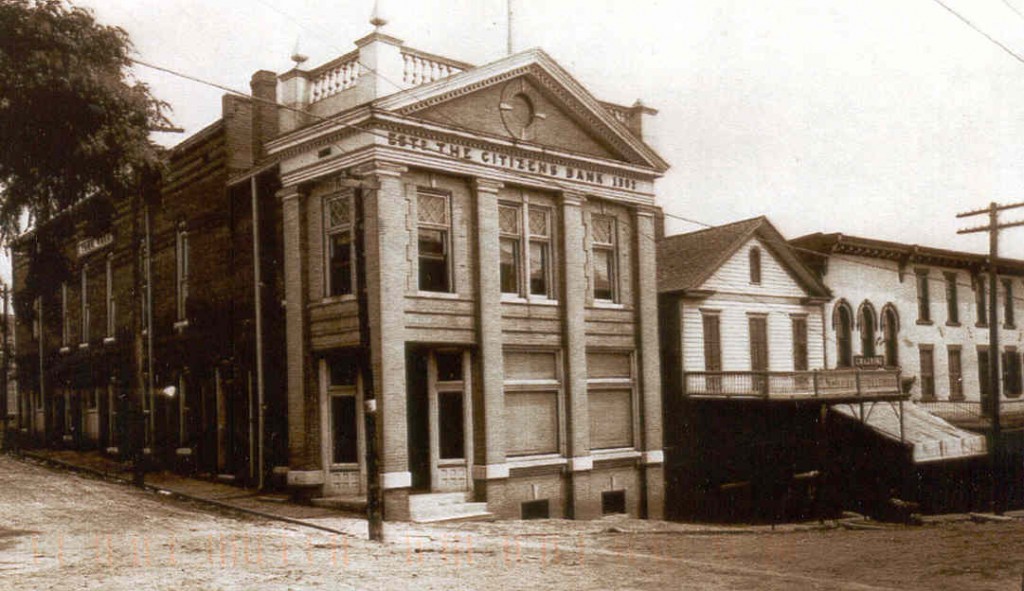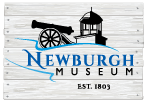
As a town situated on the fertile banks of the Ohio River, Newburgh has a long and rich history of human activity. Western explorers first discovered the area in the 17th centuries. But for centuries prior to that it had been inhabited by the Shawnee and was near the center of prehistoric Mississippian culture even as late as 1450 A.D. Evidence of this prehistoric society remains today at Angel Mounds, a National Historic Landmark, and Ellerbusch Site, both approximately two miles west of Newburgh.
The principal founders of Newburgh are John Sprinkle and Abner Luce. Sprinkle, a businessman of German descent, landed in Newburgh in the spring of 1803, thirteen years before Indiana entered the Union as the 19th state. He secured land grants in 1812 and in 1818 platted what became known as Sprinklesburgh. It was the first town in Warrick County. The original plat of Sprinklesburgh consisted of approximately 12 blocks immediately west of today’s downtown Newburgh. In 1820, Sprinkle sold Samuel Short 82 of the 102 lots. Mr. Short began to call the town Mount Prospect.
Abner Luce founded Newburgh almost directly to the east of Sprinklesburgh in 1829. According to some historical sources Luce’s plat was merged with Sprinkelsburgh in 1837, though the first reference of this in the General Assembly doesn’t occur until 3 February 1841. At that time the name of the town was changed to Newburgh.
Early on in its history Newburgh enjoyed prosperity. By 1850, the town had grown to be regional riverport. Much of its growth in this time period was due to coal mining. The first underground mine shaft in Indiana was sunk in Newburgh in 1850. However, when the national railway system came to southern Indiana, it bypassed Newburgh completely in favor of Evansville, beginning a permanent shift in regional economic dominance.
According to a number of historical sources, Newburgh was a stop on the Underground Railroad. On July 18, 1862, Newburgh was the first town north of the Mason-Dixon line to be captured by the Confederate forces during the American Civil War in what would come to be known as the Newburgh Raid. Colonel Adam “Stovepipe” Johnson, with a partisan band, crossed the Ohio River and confiscated supplies and ammunition without a shot being fired. The Confederates would have been unable to shell the city (as promised) had Newburgh put up a fight. The Confederates’ “cannons” were an assemblage of a stove pipe, a charred log, and wagon wheels. The raid convinced the federal government that it was necessary to supply Indiana with a permanent force of regular Union Army soldiers to counter future raids. Many of the structures used in this raid are still standing, including The Exchange Hotel.
Newburgh’s economy benefited from the construction of the Lock and Dam 47 in the 1920s, and its replacement in 1974 with the Newburgh Lock and Dam. The town has also benefited from the arrival, and later expansions, of the Aluminum Company of America (ALCOA) in the 1950s and then the 1970s. Many of Newburgh’s residents are commuters to businesses and industry in Evansville and surrounding areas.
In 1994, Newburgh leaders planned to annex large areas that would have extended town limits to Frame Road (west) and SR 66 (north and east). From a planning perspective, this would have given Newburgh the ability to plan land use for large open, undeveloped areas. However, by 2001 the town’s leadership shifted its focus away from annexation toward planning in the well-established current town limits. Today Newburgh’s Historic Preservation District on the Ohio River, with the scenic Rivertown Trail, provides residents and visitors with specialty shops, antique stores, and unique dining opportunities in a serene picturesque setting.
